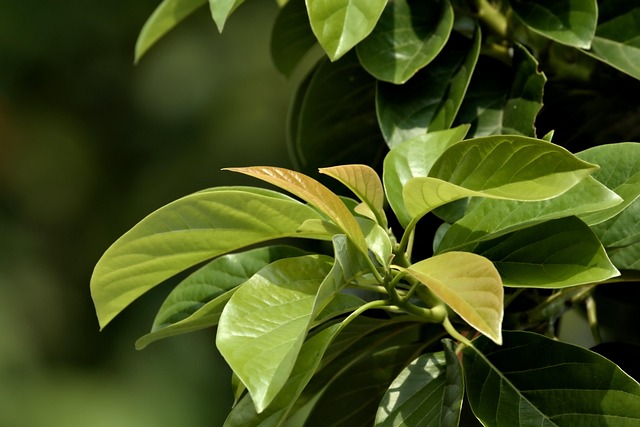In the wake of storms, many Anderson, SC residents find themselves assessing the damage to their properties—including their trees. Understanding storm damage and its impact on trees is crucial for knowing when to consider emergency tree removal. This guide explores the signs requiring immediate attention, safety evaluations, and the process of professional tree trimming/pruning in Anderson, SC. Additionally, it offers post-removal care tips and prevention strategies to safeguard against future storms.
- Understanding Storm Damage and Its Impact on Trees
- When to Consider Emergency Tree Removal in Anderson SC
- Evaluating the Safety Concerns with Damaged Trees
- The Process of Emergency Tree Trimming/Pruning
- Post-Removal Care and Prevention Tips for Future Storms
Understanding Storm Damage and Its Impact on Trees
In the aftermath of a storm, trees can sustain significant damage that may render them unsafe or even pose a risk to nearby properties and individuals. Understanding how storms impact trees is crucial when considering emergency tree removal in Anderson SC. High winds, heavy rainfall, lightning strikes, and fallen debris can all cause structural weaknesses such as cracked branches, uprooting, or severe lean. These damages can be subtle at first glance but often have long-term effects on the health and stability of the tree.
Regular tree trimming and pruning by professionals in Anderson SC are essential preventive measures that can significantly reduce the risk of storm damage. Well-maintained trees are more resilient against extreme weather conditions, as proper trimming removes dead or weak branches, allowing for better airflow and reducing the potential for breakage during storms. Early detection of storm damage and prompt action from certified arborists can save trees and safeguard surrounding areas from further complications.
When to Consider Emergency Tree Removal in Anderson SC
In Anderson, SC, storm damage can leave trees in a hazardous condition, prompting homeowners and property managers to consider emergency tree removal services. While some minor damages might be addressed through proper tree trimming and pruning, it’s crucial to recognize when a tree poses an imminent threat. Signs such as significant branch breakage, large wounds or tears in the trunk, and structural instability indicate that immediate action is necessary. Professional arborists can assess these situations and provide expert advice on whether the tree can be safely saved or if removal is the best course of action.
Regularly scheduled tree trimming and pruning are essential for maintaining tree health and preventing storm damage in the first place. Homeowners should not attempt to tackle large or high trees without proper equipment and training, as this can lead to injuries or further property damage. Turn to reputable Anderson SC tree trimming professionals who understand local weather patterns and tree species, ensuring your trees remain safe and healthy year-round.
Evaluating the Safety Concerns with Damaged Trees
When a storm hits, trees can sustain significant damage, from cracked branches to uprooting. Evaluating the safety concerns of storm-damaged trees is paramount before considering any course of action. In Anderson, SC, tree trimming and pruning services are essential for assessing and mitigating these risks. Professional arborists inspect the tree’s overall health, stability, and potential hazards. They look for loose or hanging branches that could fall, examine lean or tilt, and consider the structural integrity of the trunk. This meticulous process ensures that any decision made regarding the tree’s removal or pruning is based on sound safety assessments.
Tree trimming and pruning not only enhance safety but also contribute to the long-term health of the tree. Skilled technicians employ techniques tailored to different tree species, ensuring minimal damage and promoting recovery. Proper evaluation and subsequent tree maintenance can save valuable trees, preventing further storm damage or personal injury risks associated with fallen debris.
The Process of Emergency Tree Trimming/Pruning
When faced with storm-damaged trees, prompt action is crucial to ensure safety and prevent further property damage. Emergency tree trimming or pruning in Anderson, SC, involves a meticulous process designed to assess and mitigate risks effectively. Professionals begin by conducting a thorough inspection of the tree, identifying any broken branches, cracks, or signs of instability. This step is vital as it helps determine the scope of work required to make the tree safe again.
The actual trimming or pruning involves using specialized equipment and techniques to carefully remove damaged or dead branches. Skilled arborists prioritize safety, ensuring they have the right tools and gear to protect themselves while working at heights. They meticulously cut away affected limbs, taking care not to cause further harm to the tree’s structure. The goal is to stabilize the tree without compromising its overall health, ensuring that it can withstand future storms or environmental stresses.
Post-Removal Care and Prevention Tips for Future Storms
After emergency tree removal, proper post-care is essential for your property and safety. Once the damaged tree has been cut down, remove all debris from your yard to prevent potential hazards. It’s also crucial to inspect the surrounding area for any loose branches or roots that could cause further damage. Regularly clearing away dead wood and trimming trees can significantly reduce the risk of future storm-related issues. Consider hiring professional tree trimming and pruning services in Anderson, SC, who can provide expert advice and maintain your landscape’s health.
To prepare for upcoming storms, ensure your trees are well-maintained. Regular pruning helps strengthen branches and promotes better growth. Remove any dead or diseased limbs, as these are more susceptible to breaking during severe weather. Keep an eye on the overall health of your trees, addressing any issues promptly. By implementing these preventive measures, you can minimize storm damage and protect your property from potential risks associated with fallen trees.
